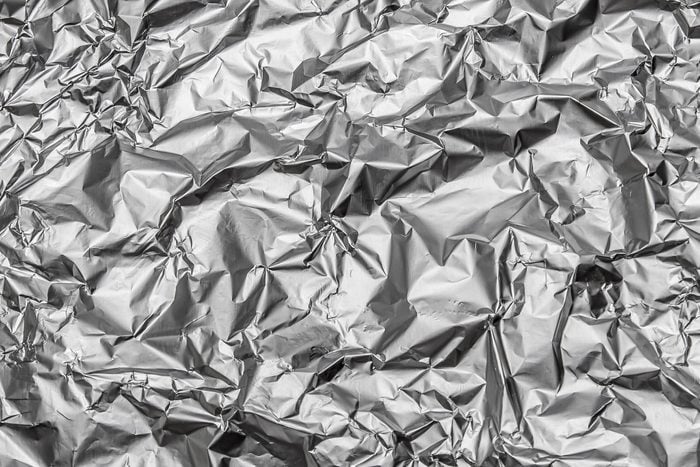
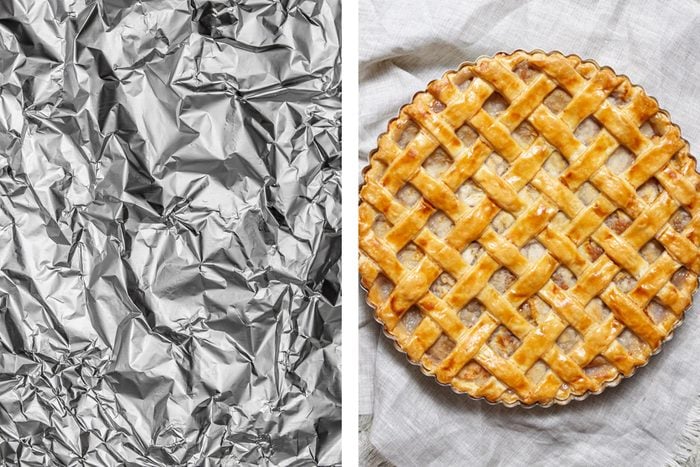
Bake a perfect pie crust
Some of these aluminum foil uses will help you in the kitchen. Keep the edges of your homemade pies from burning by covering them with strips of aluminum foil. The foil prevents the edges from getting overdone while the rest of your pie gets perfectly browned. Check out these other extraordinary uses for household staples.
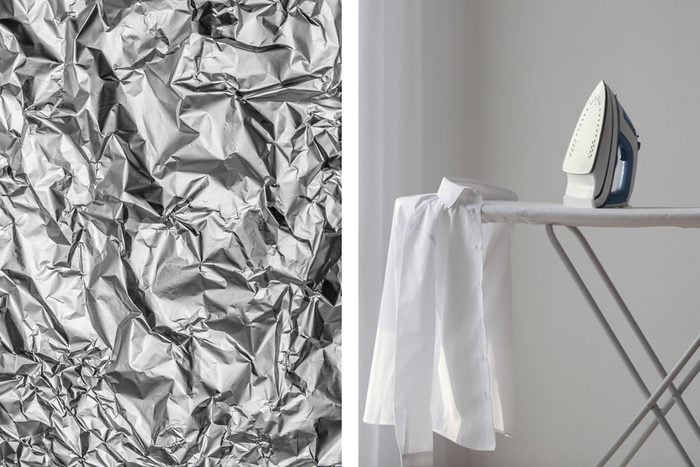
Speed your ironing
A few of these aluminum foil uses require use of your iron. When you iron clothing, a lot of the iron’s heat is sucked up by the board itself—requiring you to make several passes to remove wrinkles. To speed things up, put a piece of aluminum foil under your ironing board cover. The foil will reflect the heat back through the clothing, smoothing wrinkles quicker.
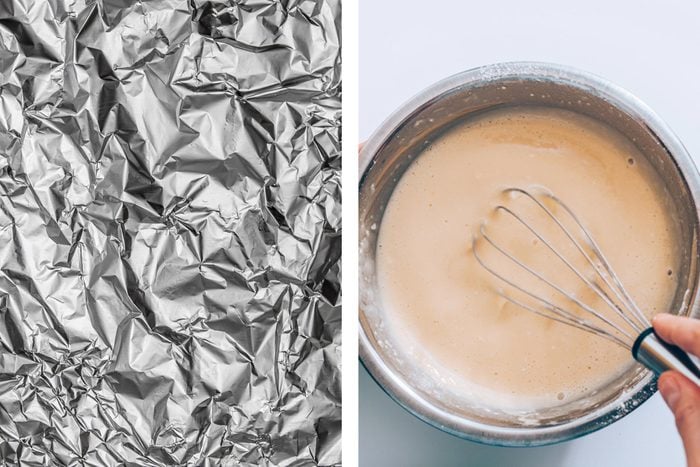
Create special-shaped cake pans
Make a teddy bear birthday cake, a Valentine’s Day heart cake, a Christmas tree cake, or whatever shaped cake the occasion may call for. Just form a double thickness of heavy-duty aluminum foil into the desired shape inside a large cake pan.
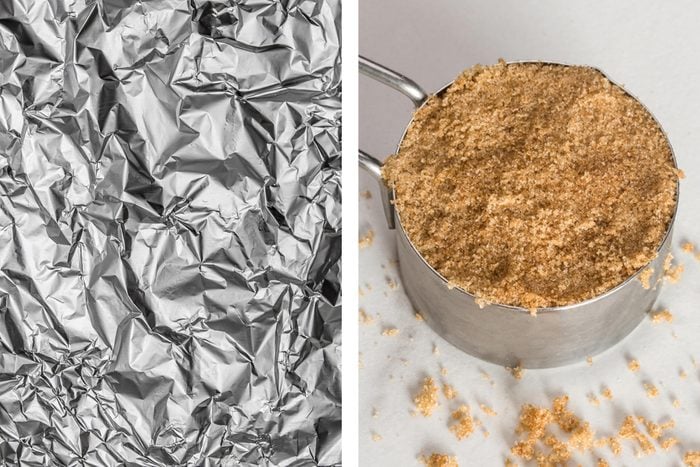
Soften up brown sugar
To restore your hardened brown sugar to its former powdery glory, chip off a piece, wrap it in aluminum foil, and bake it in the oven at 300°F (150° C) for five minutes.
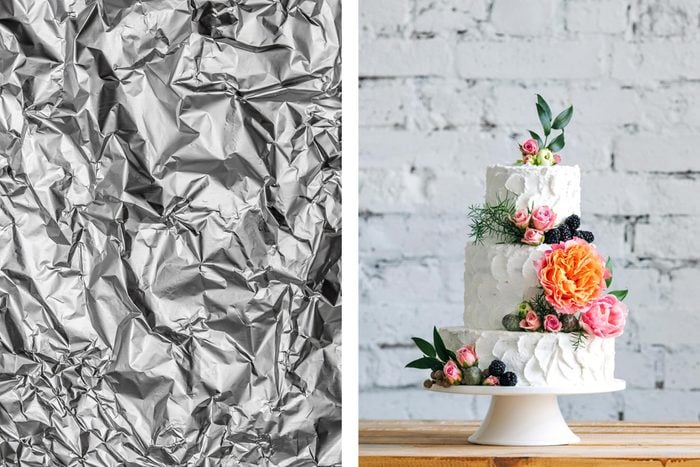
Decorate a cake
No pastry bag handy? No problem. Form a piece of heavy-duty aluminum foil into a tube and fill it with free-flowing frosting. Bonus: There’s no pastry bag to clean—simply toss out the foil when you’re done.
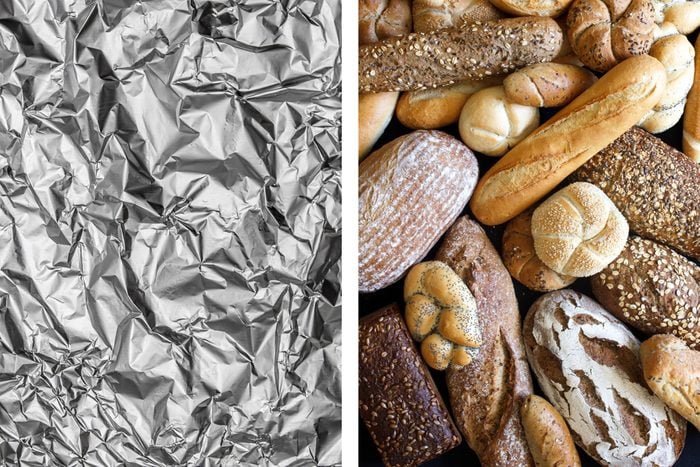
Keep bread and rolls warm
Want to lock in the oven-fresh warmth of your homemade bread or rolls for a dinner party or picnic? Before you load up your basket, wrap your freshly baked goods in a napkin and place a layer of aluminum foil underneath. The foil will reflect the heat and keep your bread warm for quite some time.
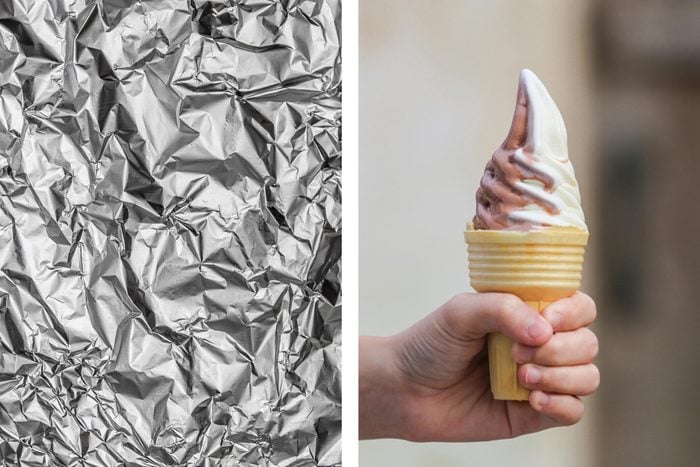
Catch ice-cream cone drips
Keep youngsters from making a mess of their clothes or your house by wrapping the bottom of an ice-cream cone (or a wedge of watermelon) with a piece of aluminum foil before handing it to them.
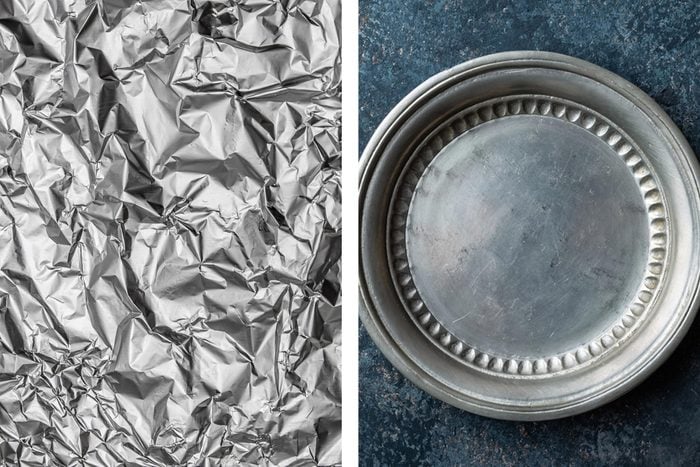
Polish your silver
Is your silverware looking a bit dull these days? Try an ion exchange, a molecular reaction in which aluminum acts as a catalyst. All you have to do is line a pan with a sheet of aluminum foil, fill it with cold water, and add two teaspoons of salt. Drop your tarnished silverware into the solution, let it sit for two to three minutes, then rinse off and dry.
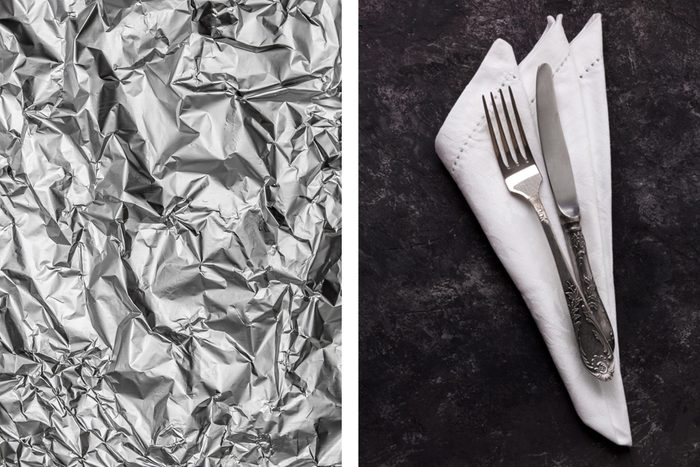
Prevent silverware tarnish
Store freshly cleaned silverware on top of a sheet of aluminum foil to deter tarnishing. For long-term silverware storage, first tightly cover each piece in cellophane wrap—be sure to squeeze out as much air as possible—then wrap in foil and seal the ends.
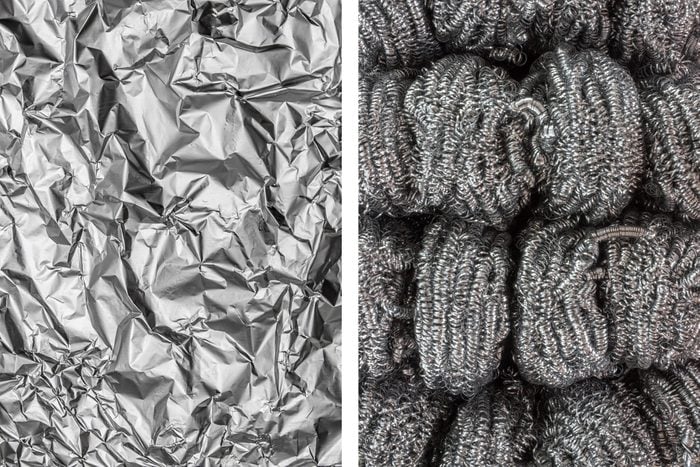
Preserve steel-wool pads
It’s maddening. You use a steel-wool pad once, put it in a dish by the sink, and the next day you find a rusty mess fit only for the trash. To prevent rust and get your money’s worth from a pad, wrap it in foil and toss it into the freezer. You can also lengthen the life of your steel-wool soap pads by crumpling up a sheet of foil and placing it under the steel wool in its dish or container. (Don’t forget to periodically drain off the water that collects at the bottom.) If you prefer to let technology wash your dishes, learn why you should be putting aluminum foil in your dishwasher.
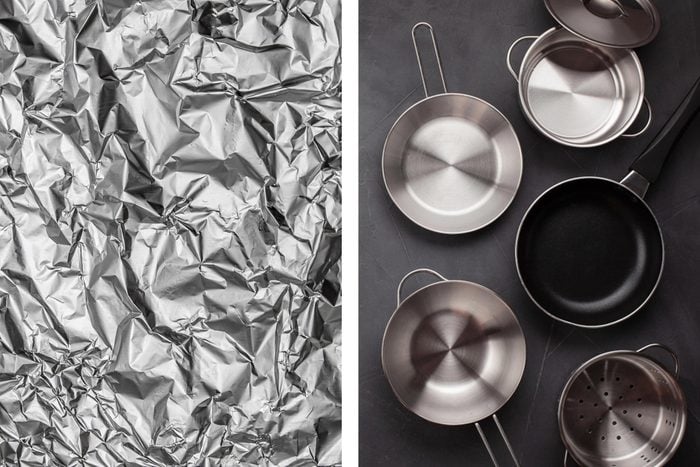
Scrub your pots
Don’t have a scrub pad? Crumple up a handful of aluminum foil and use it to scrub your pots. Check out these household vinegar uses you never knew about.
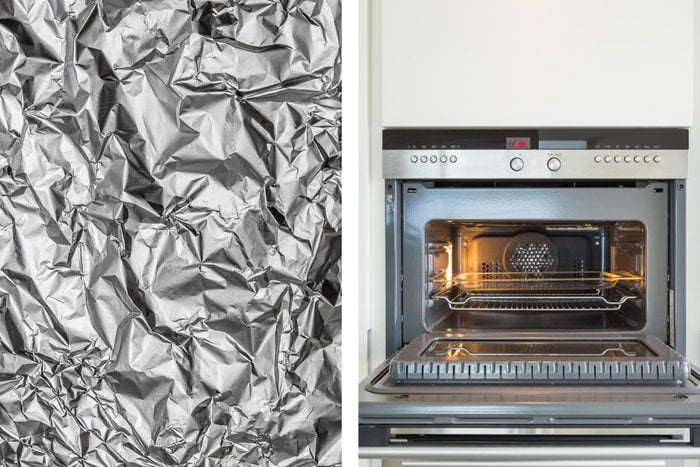
Keep the oven clean
Are you baking a bubbly lasagna or casserole? Keep messy drips off the bottom of the oven by laying a sheet or two of aluminum foil over the rack below. Do not line the bottom of the oven with foil; it could cause a fire. For more kitchen hacks, find out why you should put your paper towels in the fridge.
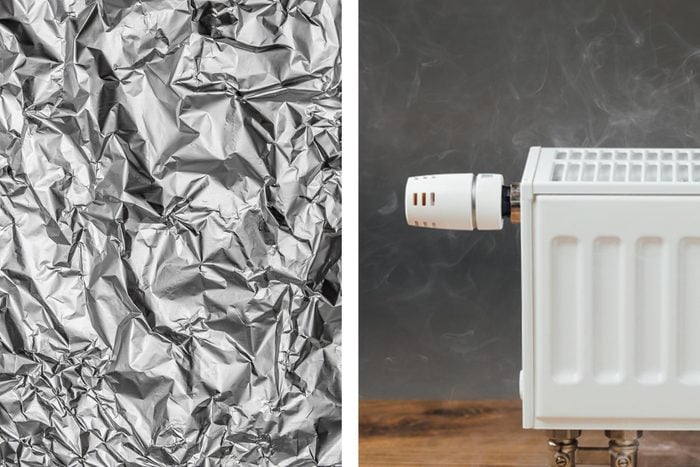
Improve radiator efficiency
Here’s a simple way to get more heat out of your old cast-iron radiators without spending one cent more on your gas or oil bill: Make a heat reflector to put behind them. Tape heavy-duty aluminum foil to cardboard with the shiny side of the foil facing out. The radiant heat waves will bounce off the foil into the room instead of being absorbed by the wall behind the radiator. If your radiators have covers, it also helps to attach a piece of foil under the cover’s top.
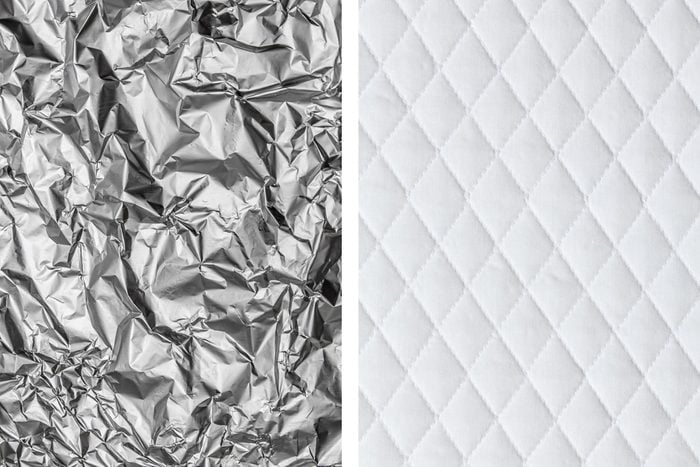
Protect a child’s mattress
As any parent of a potty-trained youngster knows, accidents happen. When they happen in bed, however, you can spare the mattress—even if you don’t have a plastic protector available. First, lay several sheets of aluminum foil across the width of the mattress. Then, cover them with a good-sized beach towel. Finally, attach the mattress pad and bottom sheet.
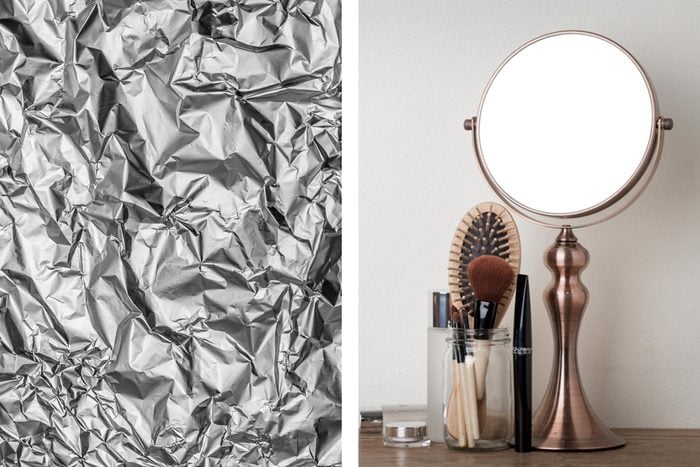
Hide worn spots in mirrors
Sometimes a worn spot adds to the charm of an old mirror; sometimes it’s a distraction. You can easily disguise small flaws on a mirror’s reflective surface by putting a piece of aluminum foil, shiny side facing out, on the back of the glass. To hold the foil in place, attach it to the backing behind the mirror or to the frame with masking tape. Don’t tape it to the mirror itself.
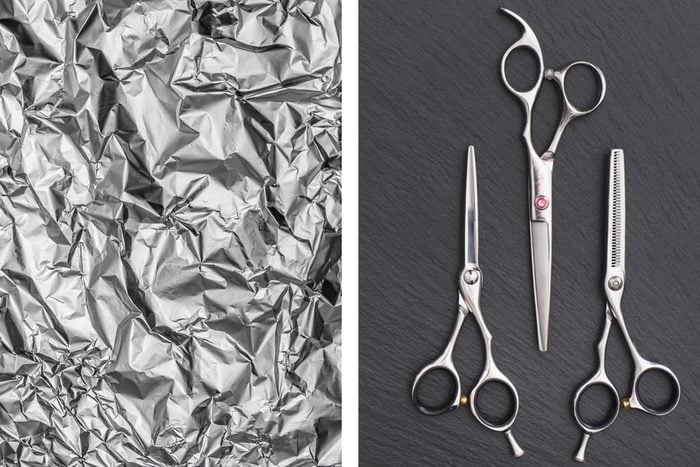
Sharpen your scissors
What can you do with those clean pieces of leftover foil you have hanging around? Use them to sharpen up your dull scissors! Smooth them out if necessary, and then fold the strips into several layers and start cutting. Seven or eight passes should do the trick. Pretty simple, huh?
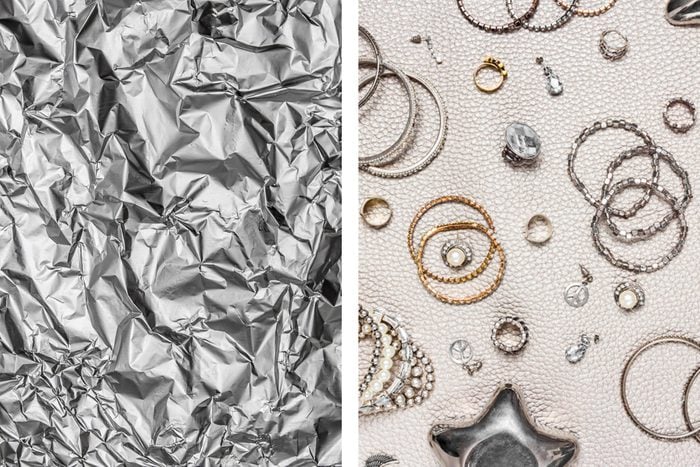
Clean jewelry
To clean your jewelry, simply line a small bowl with aluminum foil. Fill the bowl with hot water and mix in one tablespoon of bleach-free powdered laundry detergent (not liquid), such as Tide. Put the jewelry in the solution and let it soak for one minute. Rinse well and air-dry. This procedure makes use of the chemical process known as ion exchange, which can also be used to clean silverware.
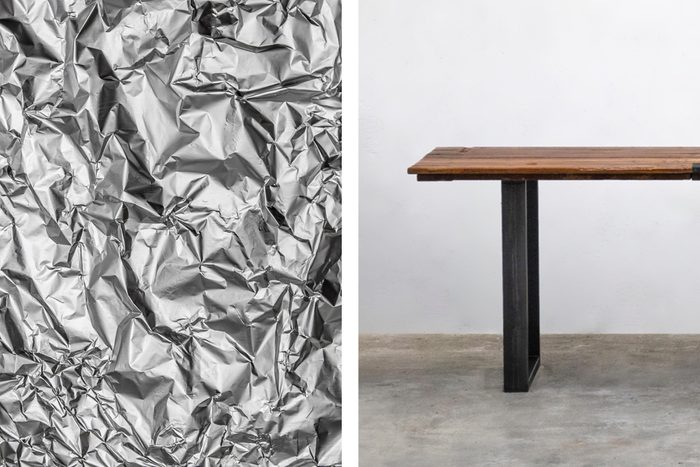
Move furniture with ease
To slide big pieces of furniture over a smooth floor, place small pieces of aluminum foil under the legs. Put the dull side of the foil down—the dull side is actually more slippery than the shiny side.
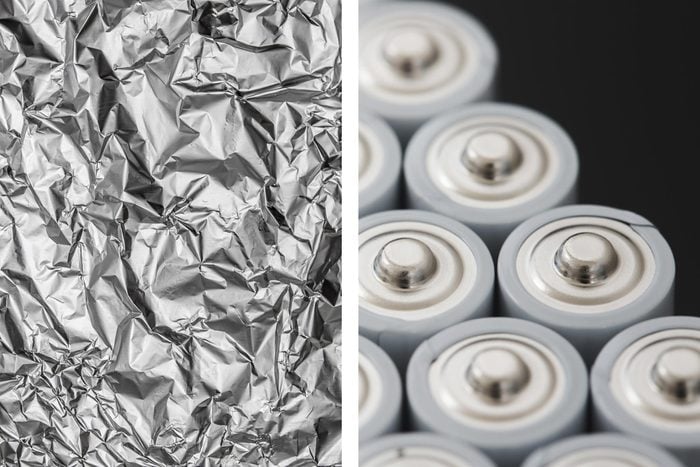
Fix loose batteries
Is your flashlight, Walkman, or your kid’s toy working intermittently? Check the battery compartment. Those springs that hold the batteries in place can lose their tension after a while, letting the batteries loosen. Fold a small piece of aluminum foil until you have a pad that’s thick enough to take up the slack. Place the pad between the battery and the spring. Check out these amazing uses for WD-40.
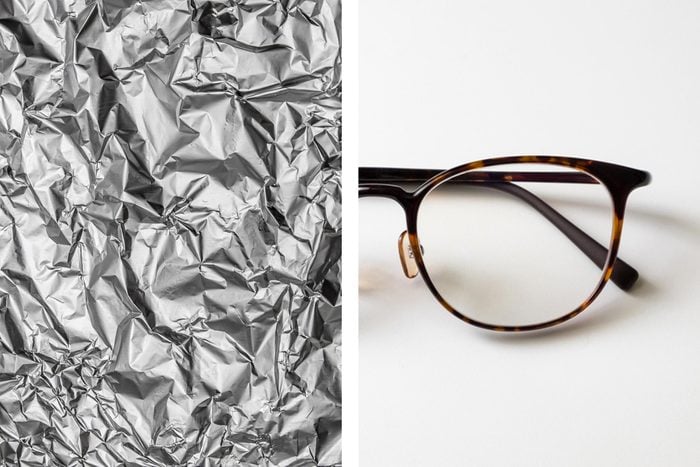
Don’t dye your glasses
You want to catch up on your reading during the time it takes to color your hair. But you can’t read without your specs—yet if you put them on, hair dye can stain them. Solution: Wrap the temples of your glasses with aluminum foil.
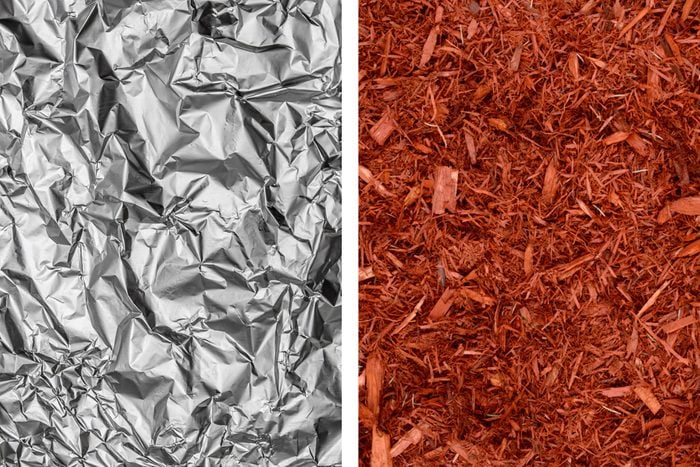
Put some bite in your mulch
To keep hungry insects and slugs away from your cucumbers and other vegetables, mix strips of aluminum foil in with your garden mulch. As a bonus benefit, the foil will reflect light back up onto your plants.

Clean out your fireplace
Looking for an easy way to clean the ashes out of your fireplace? Place a double layer of heavy-duty aluminum foil across the bottom of the fireplace or under the wood grate. The next day—or once you’re sure all the ashes have cooled—simply fold it up and throw it away.
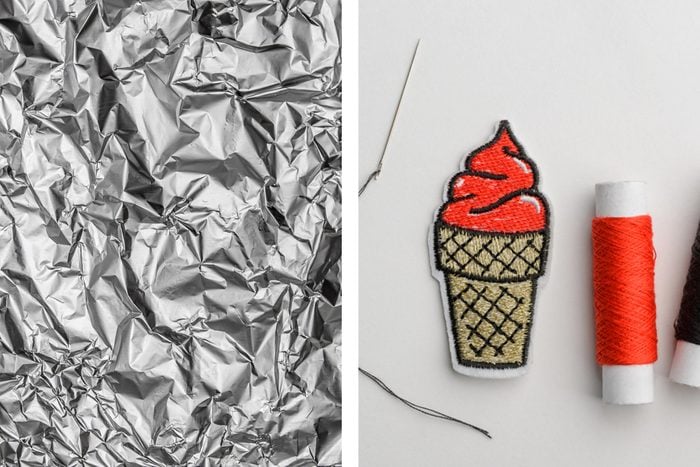
Attach a patch
An iron-on patch is an easy way to fix small holes in clothing—but only if it doesn’t get stuck onto your ironing board. To avoid this, put a piece of aluminum foil under the hole. It won’t stick to the patch, and you can just slip it out when you’re finished.
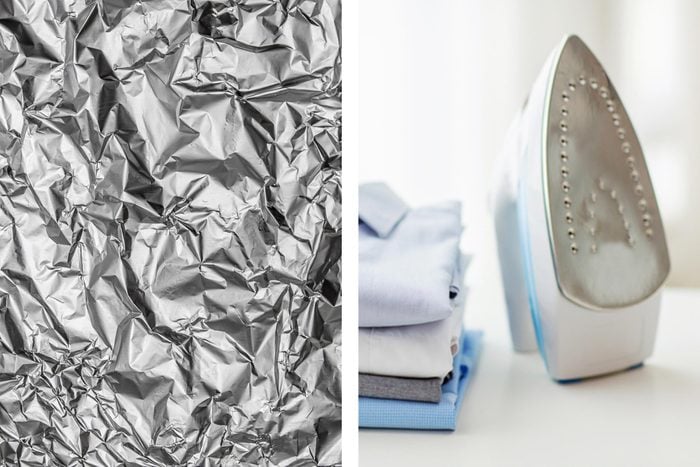
Clean your iron
Is starch building up on your clothes iron and causing it to stick? To get rid of it, run your iron while it’s hot over a piece of aluminum foil.

Protect tree trunks
Mice, rabbits, and other animals often feed on the bark of young trees during winter. A cheap and effective deterrent is to wrap the tree trunks with a double layer of heavy-duty aluminum foil in late fall. Just be sure to remove the foil in spring.
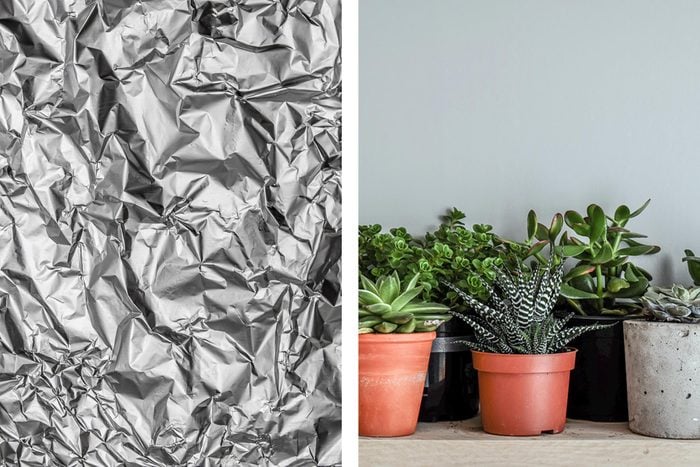
Create a sun box for plants
A sunny window is a great place for keeping plants that love a lot of light. However, since the light always comes from the same direction, plants tend to bend toward it. To bathe your plants in light from all sides, make a sun box: Remove the top and one side from a cardboard box and line the other three sides and bottom with aluminum foil, shiny side out, taping or gluing it in place. Place plants in the box and set it near a window.
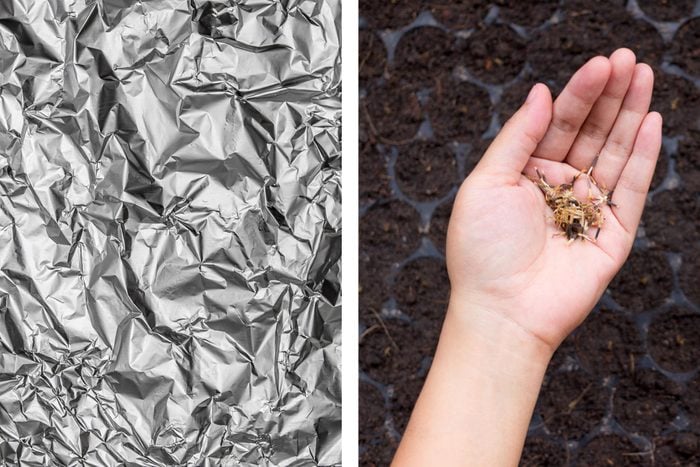
Build a seed incubator
To give plants grown from seeds a healthy head start, line a shoe box with aluminum foil, shiny side up, allowing about two inches of foil to extend out over the sides. Poke several drainage holes in the bottom—penetrating the foil—then fill the box slightly more than halfway with potting soil, and plant the seeds. The foil inside the box will absorb heat to keep the seeds warm as they germinate, while the foil outside the box will reflect light onto the young sprouts. Place the box near a sunny window, keep the soil moist, and watch ’em grow!
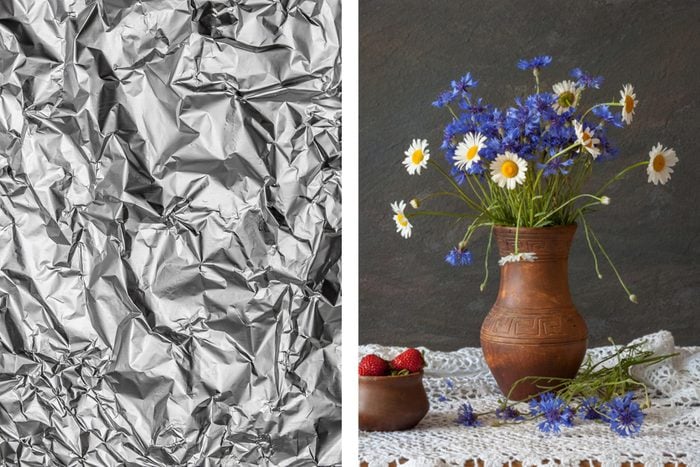
Grow untangled cuttings
Help plant cuttings grow strong and uncluttered by starting them in a container covered with a sheet of aluminum foil. Simply poke a few holes in the foil and insert the cuttings through the holes. There’s even an added bonus: The foil slows water evaporation, so you’ll need to add water less frequently.
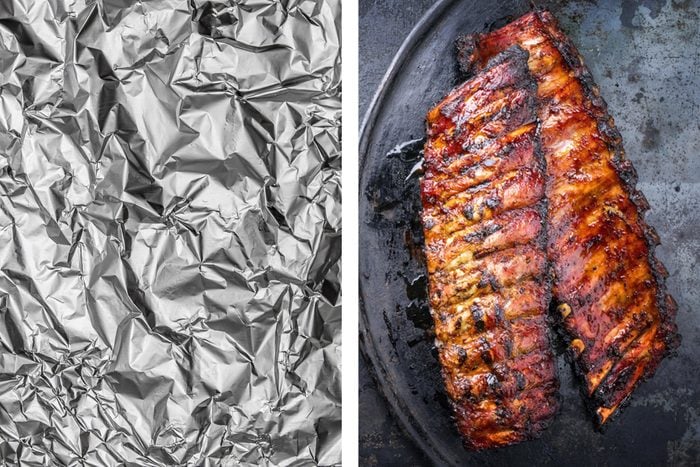
Make a barbecue drip pan
To keep meat drippings off your barbecue coals, fashion a disposable drip pan out of a couple of layers of heavy-duty aluminum foil. Shape it freehand, or use an inverted baking pan as a mold (remember to remove the pan once your creation is finished). Also, don’t forget to make your drip pan slightly larger than the meat on the grill.
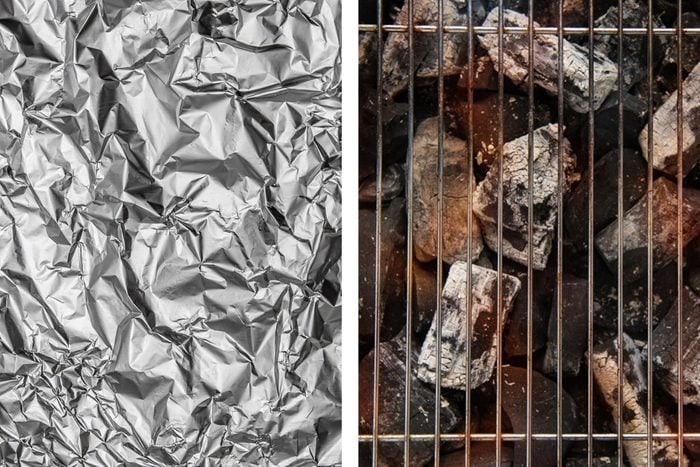
Clean your barbecue grill
After the last steak is brought in, and while the coals are still red-hot, lay a sheet of aluminum foil over the grill to burn off any remaining foodstuffs. The next time you use your barbecue, crumple up the foil and use it to easily scrub off the burned food before you start cooking.
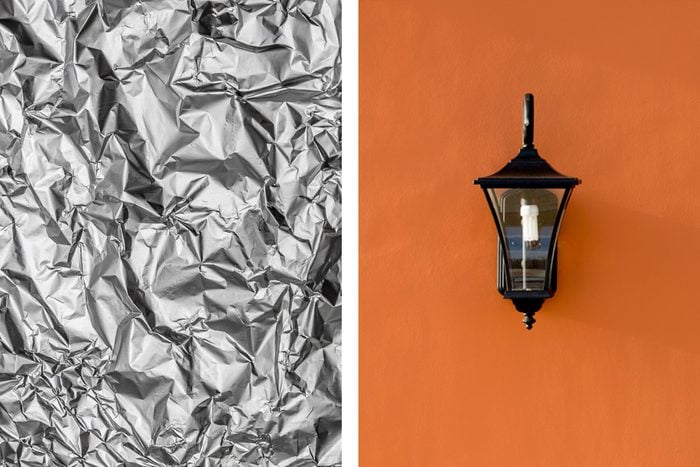
Improve outdoor lighting
Brighten up the electrical lighting in your backyard or campsite by making a foil reflector to put behind the light. Attach the reflector to the fixture with a few strips of electrical or duct tape—do not apply the tape directly to the bulb.
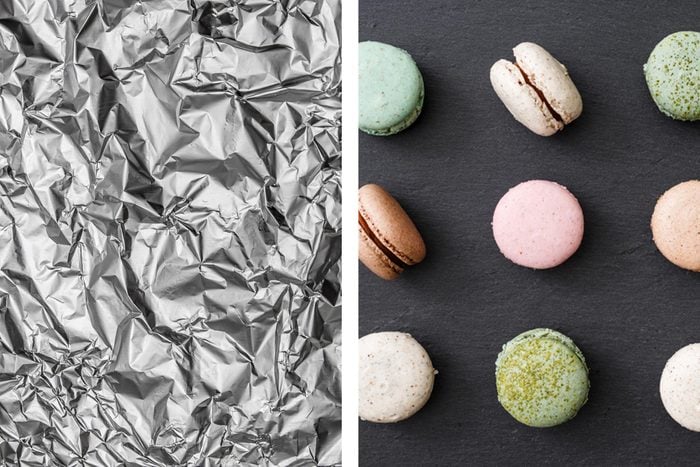
Make an impromptu platter
When you need a convenient disposable platter, just cover a piece of cardboard with heavy-duty aluminum foil.
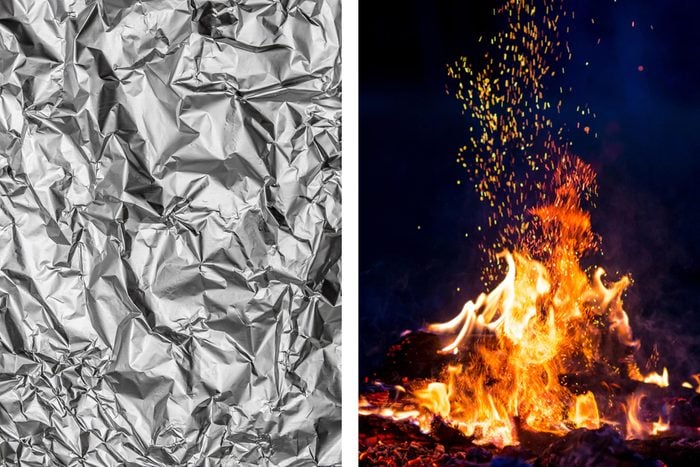
Improvise a frying pan
Don’t feel like lugging a frying pan along on a camping trip? Form your own by centering a forked stick over two layers of heavy-duty aluminum foil. Wrap the edges of the foil tightly around the forked branches but leave some slack in the foil between the forks. Invert the stick and depress the center to hold food for frying.
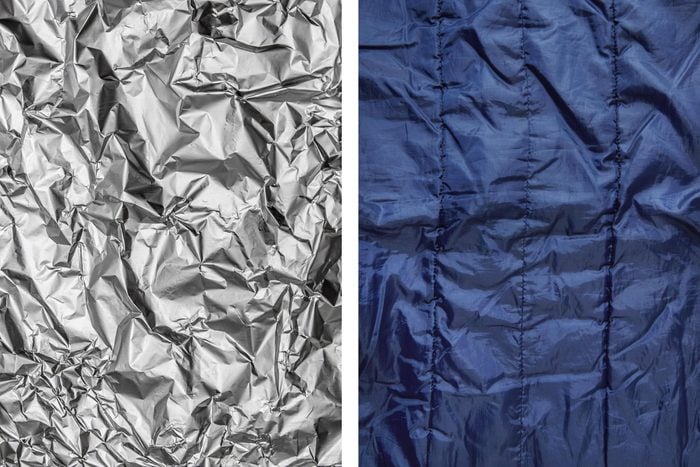
Keep your sleeping bag dry
Place a piece of heavy-duty aluminum foil under your sleeping bag to insulate against moisture. You’ll be dry and get a great night’s sleep.
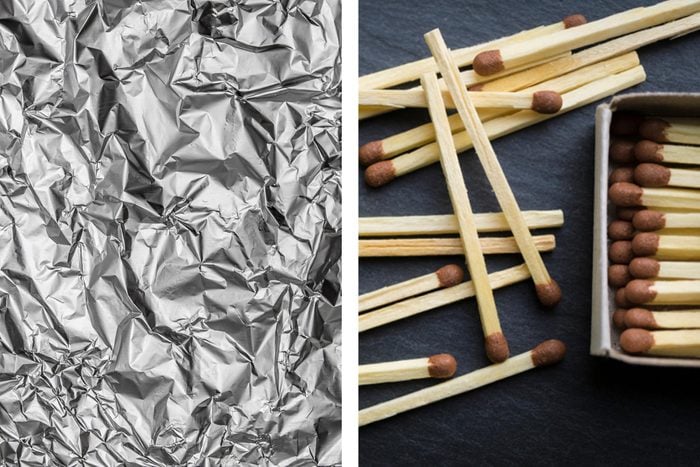
Save dry matches
It’s a tried-and-true soldier’s trick worth remembering: Wrap your kitchen matches in aluminum foil to keep them from getting damp or wet on camping trips. You can also fix your candles by putting aluminum foil around the edges.
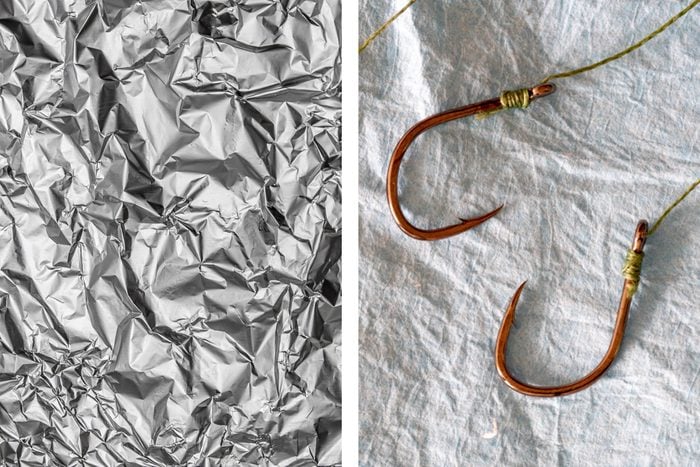
Lure a fish
None of your fancy fishing lures working? You can make one in a jiffy that just might do the trick: Wrap some aluminum foil around a fishhook. Fringe the foil so that it covers the hook and wiggles invitingly when you reel in the line.
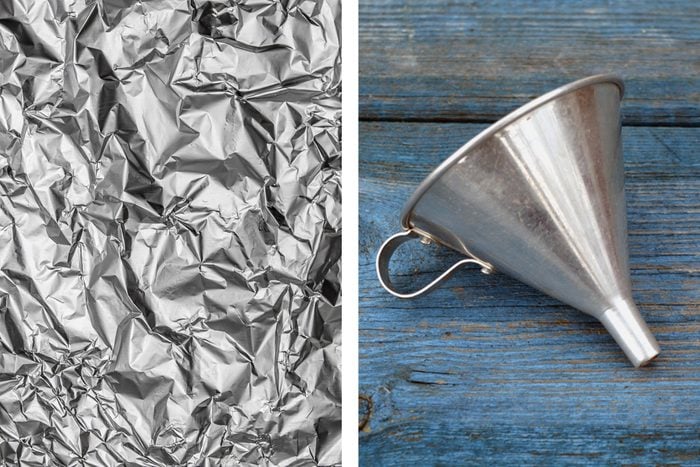
Make a funnel
Can’t find a funnel? Double up a length of heavy-duty aluminum foil and roll it into the shape of a cone. This impromptu funnel has an advantage over a permanent funnel—you can bend the aluminum foil to reach awkward holes, like the oil filler hole tucked against the engine of your lawn tractor.
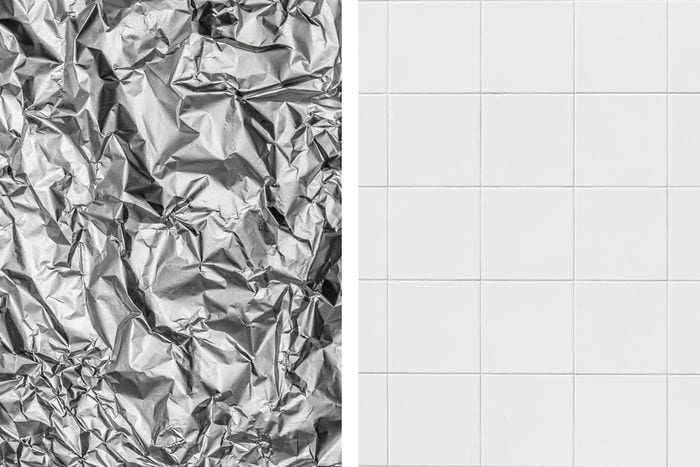
Re-attach a vinyl floor tile
Aluminum foil is perfect when you’re doing some home renovation. Don’t become unglued just because a vinyl floor tile does. Simply reposition the tile on the floor, lay a piece of aluminum foil over it, and run a hot clothes iron over it a few times until you can feel the glue melting underneath. Put a pile of books or bricks on top of the tile to weigh it down while the glue resets. This technique also works well to smooth out bulges and straighten curled seams in sheet vinyl flooring. Make sure you don’t make these kitchen mistakes.
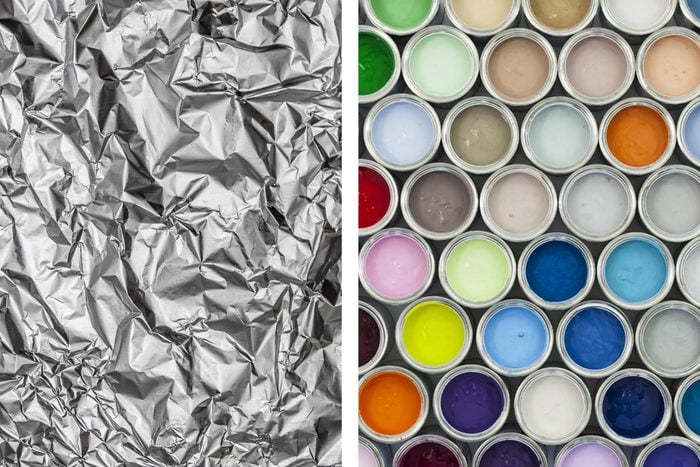
Make an artist’s palette
Tear off a length of heavy-duty aluminum foil, crimp up the edges, and you’ve got a ready-to-use palette for mixing paints. If you want to get a little fancier, cut a piece of cardboard into the shape of a palette, complete with thumb hole, and cover it with foil. Or if you already have a wooden palette, cover it with foil before each use and then just strip off the foil instead of cleaning it.
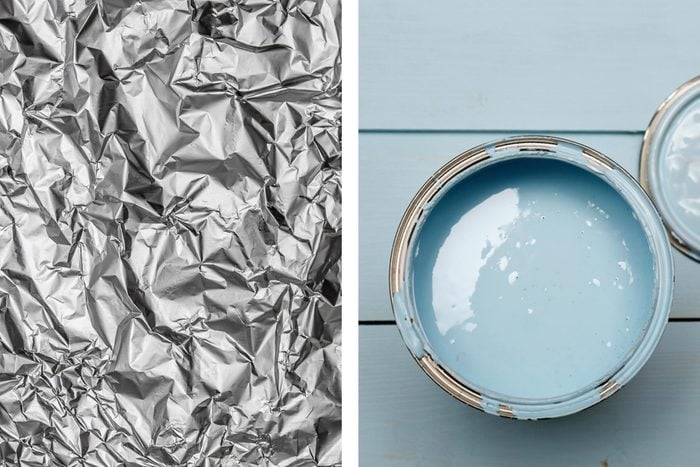
Prevent paint from skinning over
When you open a half-used can of paint, you’ll typically find a skin of dried paint on the surface. Not only is this annoying to remove, but dried bits can wind up in the paint. You can prevent this by using a two-pronged attack when re-using a paint can: First, put a piece of aluminum foil under the can and trace around it. Cut out the circle and drop the aluminum foil disk onto the paint surface. Then take a deep breath, blow into the can, and quickly put the top in place. The carbon dioxide in your breath replaces some of the oxygen in the can and helps keep the paint from drying.
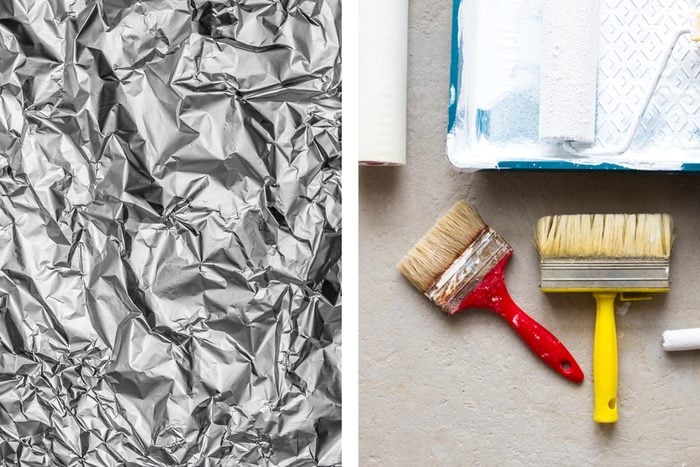
Line roller pans
Cleaning out paint roller pans is a pain, which is why a lot of folks buy disposable plastic pans or liners. But lining a metal roller pan with aluminum foil works just as well— and can be a lot cheaper.
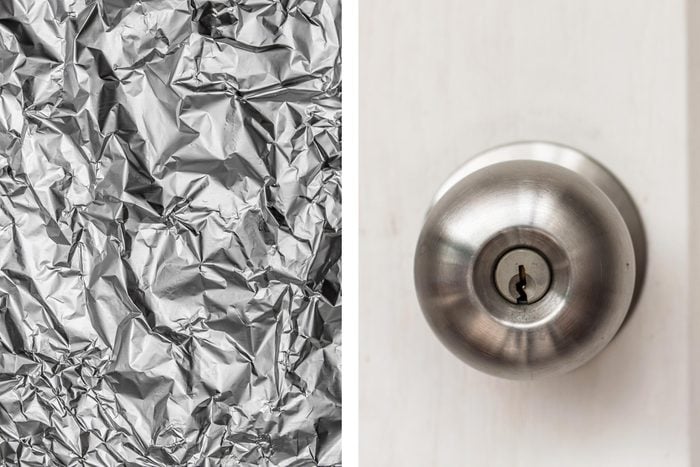
Keep paint off doorknobs
When you’re painting a door, aluminum foil is great for wrapping doorknobs to keep paint off them. Overlap the foil onto the door when you wrap the knob, then run a sharp utility knife around the base of the knob to trim the foil. That way you can paint right up to the edge of the knob. In addition to wrapping knobs on the doors that you’ll paint, wrap all the doorknobs that are along the route to where you will clean your hands and brushes. Check out these brilliant kitchen shortcuts you’ll wish you knew sooner.
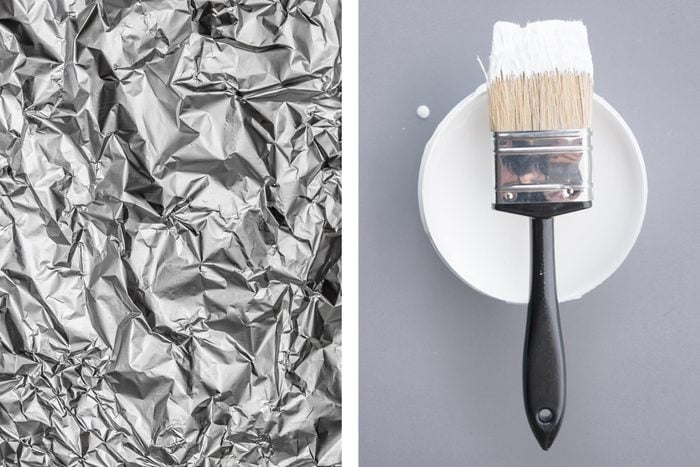
Keep a paintbrush wet
Going to continue painting tomorrow morning? Don’t bother to clean the brush—just squeeze out the excess paint and wrap the brush tightly in aluminum foil (or plastic wrap). Use a rubber band to hold the foil tightly at the base of the handle. For extended wet-brush storage, think paintbrush Popsicle, and toss the wrapped brush in the freezer. But don’t forget to defrost the brush for an hour or so before your next painting session.
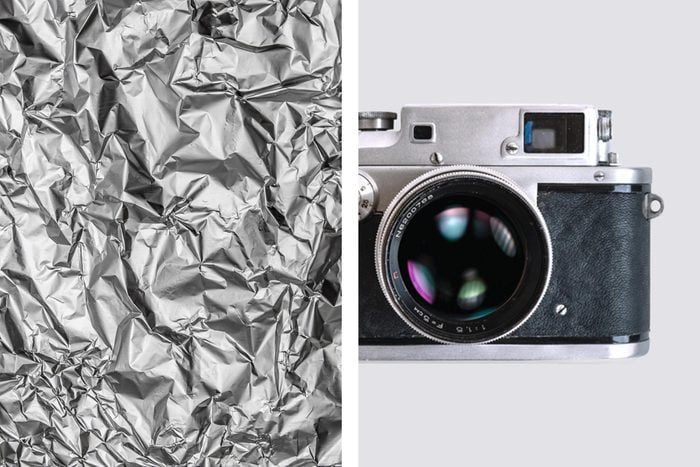
Reflect light for photography
Professional photographers use reflectors to throw extra light on dark areas of their subject and to even out the overall lighting. To make a reflector, lightly coat a piece of matboard or heavy cardboard with rubber cement and cover it with aluminum foil, shiny side out. You can make one single reflector, as large as you want, but it’s better to make three panels and join them together with duct tape so they stand up by themselves and fold up for storage and carrying.
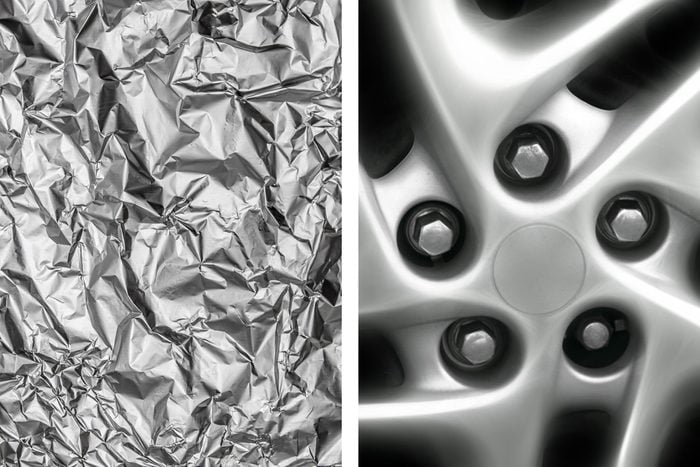
Shine your chrome
For sparkling chrome on your appliances, strollers, golf club shafts, and older car bumpers, crumple up a handful of aluminum foil with the shiny side out and apply some elbow grease. If you rub really hard, the foil will even remove rust spots. Note: Most “chrome” on new cars is actually plastic—don’t rub it with aluminum foil.
